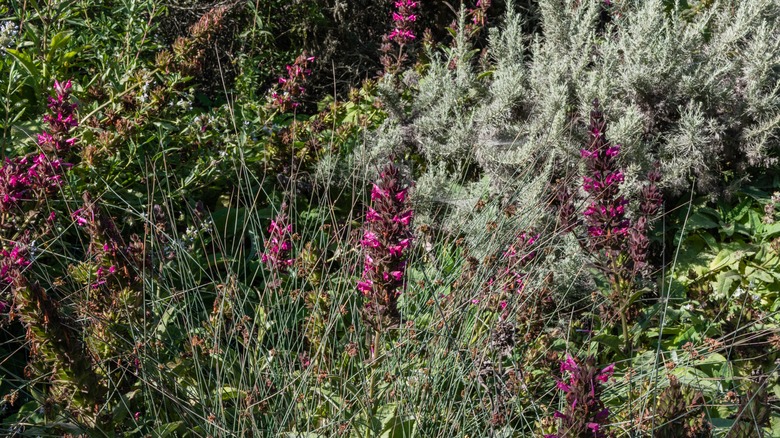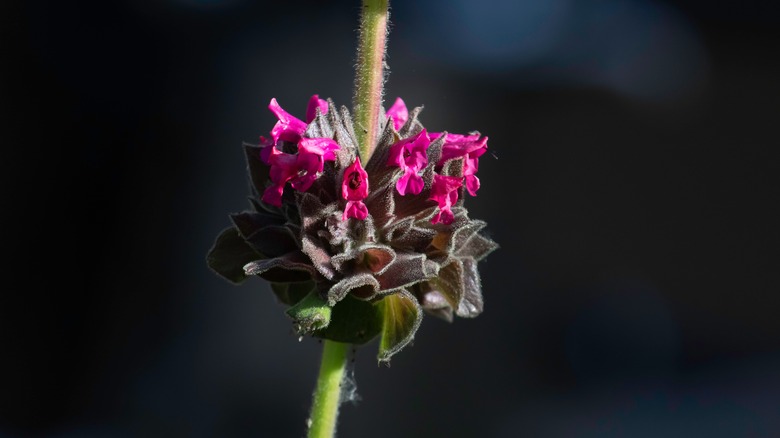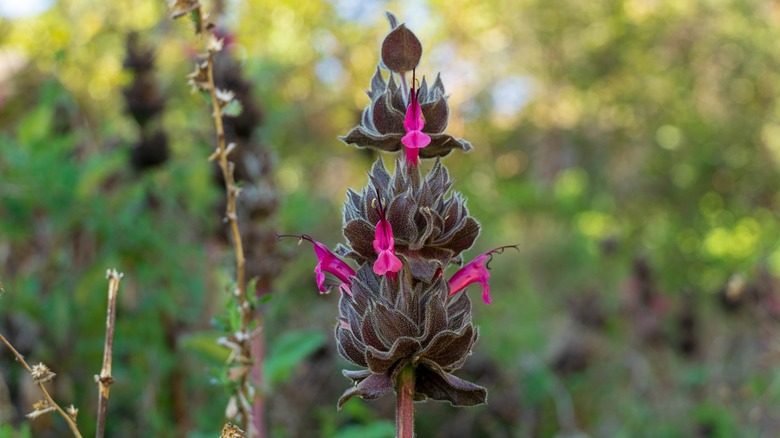Why Hummingbird Sage Makes A Perfect Groundcover & Pollinator Magnet
If you're looking to get more bang for your buck in the garden, it doesn't hurt to grow plants that have multiple uses. Hummingbird sage is one of those plants, and it benefits your garden in more ways than one. This perennial herb, from the mint family, not only acts as a beautiful ground cover, but it's also as a pollinator-friendly plant that ensures hummingbirds and butterflies will flock to your garden. Also known as pitcher sage, hummingbird sage grows from sets of rhizomes that proliferate underground. These rhizomes give it its wide-spread growth habit, characteristic of ground covers. Meanwhile, large textured leaves and magenta-colored flowers pop up from these rhizomes in the spring and winter, attracting pollinators like kids in a candy store.
In the wild, hummingbird sage commonly grows as an understory plant beneath large trees like oaks. It can reach a height of 12 to 18 inches and spread of 18 to 24 inches before gradually moving across its planting area. With its semi-evergreen foliage, blanket-like growth, and pollinator popularity, having this sage plant in your garden is a no-brainer.
Growing hummingbird sage in your yard
Hummingbird sage is easy to grow and is hardy in USDA zones eight to 11. The plant remains evergreen in temperatures as low as 20 degrees Fahrenheit, but its roots can tolerate temperatures as low as 0 degrees Fahrenheit. For those living in warmer climates, you'll be happy to know the plant is drought tolerant and will thrive without much water once it's established. In fact, hummingbird sage requires low to medium water levels as it grows. Part of its drought tolerance comes from its rhizomes. While its leaves and flowers might die, the underground rhizomes survive and can sprout in the next flowering season.
Plant hummingbird sage in well-draining, deep, clay soil. It enjoys morning sun and moderate shade. To maintain the shrub, deadhead old flower stalks at the end of the flowering period in order to keep the plant growing low to the ground. If you follow these simple steps, you will have a thriving ground cover in no time.
Using hummingbird sage in the garden
Hummingbird sage can be planted throughout your garden in a number of ways. You can grow the sage in raised planters and make a buffet of large, tubular flowers that hummingbirds will adore feasting on. Additionally, hummingbird sage can be grown as a flowering accent plant along borders to attract butterflies to your garden. However, if you're instead looking to use it to keep certain animals out of your yard, you're in luck. The plant's scent is known to repel deer and rabbits.
Furthermore, if you'd like to put a bit of a twist on growing it in your garden, consider planting one of its varieties, which come in different sizes and colors. Powerline pink, also known as Giant hummingbird sage, reaches a height of four feet before it flowers. However, once it blooms, it produces flower spikes that tack on another three feet. On the other end of the spectrum is las pillitas, which is the smallest cultivar of hummingbird sage. It grows only one to two feet tall and about two feet wide. It's perfect for small garden areas and can even be grown in containers.


